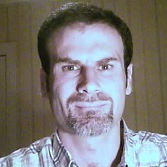Applied Laser Processing, Manufacturing, and Materials Science
A special issue of Applied Sciences (ISSN 2076-3417). This special issue belongs to the section "Optics and Lasers".
Deadline for manuscript submissions: 20 July 2024 | Viewed by 3413
Special Issue Editor
Interests: atomic and molecular optical spectroscopy; laser materials microprocessing; laser ablation; laser-induced plasma plume; nanocomposites; nanomagnetism; semiconductor optoelectronics; thin films technology
Special Issues, Collections and Topics in MDPI journals
Special Issue Information
Dear Colleagues,
In addition to the use of lasers in metrology, their ability to deliver a monochromatic, directional, coherent, and bright photon beam is a unique advantage that enables their use as tools in the field of materials processing and manufacturing. The interaction of a laser beam that has certain beam characteristics with a material is mainly determined by the type of material, defined by its optical, chemical, electrical, atomic, mechanical, manufacturing, and thermal properties, such as absorbance, reflectivity, surface energy, dielectric constant, hardness, surface roughness, strength, machinability rating, heat of vaporization, melting point, thermal conductivity, and thermal diffusivity. For instance, the relation of the pulse width of a laser beam with the electron–phonon coupling time-constant of a material is a critical factor that determines whether the material is laser ablated via melting/vaporization or sublimation. The laser ablation threshold of a thin film depends on its thickness, due mainly to the reduction in the length of the heat diffusion along the film thickness as compared to its surface. The absorption of a laser beam by a semiconducting material depends on its energy band gap. The period of the laser-induced periodic surface structures that are formed on the surface of a metal by laser irradiation depends on the relative permittivity of the material. The surface topography of glass plays a major role in the diffraction of the laser beam during ablation cutting, which in turn determines the damage formation. The electron–electron collision time and recombination coefficient critically determine the ablation depth and width during laser ablation of transparent dielectrics.
Applied Sciences invites papers for a Special Issue entitled “Applied Laser Processing, Manufacturing, and Materials Science”. This Special Issue is focused on works that emphasize and provide insights of the “processing–structure–property relationships” of materials in laser processing and manufacturing. Experimental and theoretical articles will be accepted regarding laser machining of materials, modeling of the laser beam–material interaction, interfacing laser processing and manufacturing with material characterization techniques, comparison of the properties of a material processed using lasers with those processed using other techniques, material performance of laser-processed materials, and laser processing of new and advanced materials.
Topics of interest include, but are not limited to, the following: laser surface texturing, cutting, drilling, peening, welding, brazing, or cleaning; laser additive manufacturing; laser micro/nanofabrication; numerical modeling of laser–matter interaction; traditional materials (metals, semiconductors, ceramics, polymers); biological materials; new and advanced materials, such as nanomaterials; industrial production systems of laser-based processing and manufacturing; laser processing and manufacturing combined with material characterization techniques.
Dr. Nikolaos G. Semaltianos
Guest Editor
Manuscript Submission Information
Manuscripts should be submitted online at www.mdpi.com by registering and logging in to this website. Once you are registered, click here to go to the submission form. Manuscripts can be submitted until the deadline. All submissions that pass pre-check are peer-reviewed. Accepted papers will be published continuously in the journal (as soon as accepted) and will be listed together on the special issue website. Research articles, review articles as well as short communications are invited. For planned papers, a title and short abstract (about 100 words) can be sent to the Editorial Office for announcement on this website.
Submitted manuscripts should not have been published previously, nor be under consideration for publication elsewhere (except conference proceedings papers). All manuscripts are thoroughly refereed through a single-blind peer-review process. A guide for authors and other relevant information for submission of manuscripts is available on the Instructions for Authors page. Applied Sciences is an international peer-reviewed open access semimonthly journal published by MDPI.
Please visit the Instructions for Authors page before submitting a manuscript. The Article Processing Charge (APC) for publication in this open access journal is 2400 CHF (Swiss Francs). Submitted papers should be well formatted and use good English. Authors may use MDPI's English editing service prior to publication or during author revisions.
Keywords
- laser materials processing
- laser manufacturing
- materials
- materials characterization
- numerical modeling
- industrial systems





